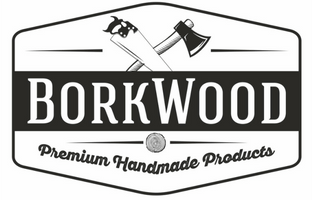Strategies to Navigate Rising Rates for American Entrepreneurs
Interest rates are climbing, and it’s a challenge many business owners didn’t plan for. Rising rates can squeeze cash flow, increase borrowing costs, and impact growth plans. But there are ways you can adapt.
Here’s how American entrepreneurs can manage these changes and keep their businesses strong.
Understand Your Financial Picture
Before making any big moves, get a clear view of your finances. Start by reviewing your debt, cash flow, and profitability. Pay special attention to your interest coverage ratio. This measures how well you can pay your loan interest from your earnings. Banks often look at this when considering lending, so make sure it’s healthy.
Take stock of your current loans. Are they variable or fixed rates? If you have variable-rate loans, your costs might rise. Fixed rates give you predictability, so consider refinancing to lock one in if it makes sense.
Prioritize Paying Down Debt
When rates rise, debt gets expensive. The more you owe, the larger your interest payments will be. Now’s the time to tackle your loans. Focus on high-interest debts first. For example, credit cards often have higher rates than lines of credit or commercial loans.
Look for ways to set aside extra cash to pay down balances. Even a small bump each month can make a big impact. Bonus tip? If your lender allows it, make bi-weekly payments instead of monthly. This reduces the principal faster, meaning you’ll pay less over time.
Be Selective About New Investments
Growth is exciting, but it can be risky during uncertain times. Rising rates can make it harder to get returns on new investments. It’s important to be conservative now.
Before committing to a big expansion or a new project, do the math. What type of investment will give you the highest return for the lowest risk? Can you afford it if financing costs increase? Think carefully before saying yes.
For many businesses, this might mean scaling back plans. But even small moves, like improving current processes or technology, can give you an edge without adding debt.
Reassess Pricing and Margins
Higher interest rates often trickle into other expenses, like supplier costs. You’ll need to keep a close eye on your profit margins. If costs rise, adjust pricing to stay profitable.
Be strategic about this. Blanket price hikes can scare off customers. Instead, consider tiered pricing or adding extra value to your products. For instance, if you sell services, add bonus features to justify a higher price. Communicate clearly to your customers so they understand why costs are changing.
And don’t forget to review contracts with vendors or suppliers. If you’ve been loyal for years, renegotiating rates might help you save.
Follow Current Trends
Keeping an eye on American entrepreneurs’ trends can help you stay ahead. Watch what others in your industry are doing. Many of them might be dealing with the same challenges as you.
For example, are other businesses shifting to more agile, lean models? Are they exploring alternative financing methods like crowdfunding or small business grants? Staying informed can help you spot opportunities you might have missed.
You can also network with other local entrepreneurs to trade tips on creative ways to cut costs or increase revenue. Shared solutions often lead to fresh ideas.
Build a Strong Cash Reserve
Cash is king in uncertain times. Having a healthy reserve can help your business weather any storms ahead. If you don’t have one yet, start small. Aim to save a portion of your revenue each month.
Even if you’re starting with only a few thousand dollars, it’s a big step. This cushion will give you peace of mind and flexibility when unexpected costs pop up.
Look for ways to free up cash without hurting operations. For example, review your inventory. Are you holding too much stock? Could you sell off older items or negotiate faster customer payments?
Explore Alternative Funding Options
Traditional loans aren’t the only option for funding. Rising rates can make them less appealing, so think outside the box.
Consider business lines of credit, which offer more flexibility. Some entrepreneurs are also turning to peer-to-peer lending platforms. These tend to have lower fees and less red tape than banks.
Another trend is exploring partnerships. Joint ventures or equity funding deals might give you access to fresh capital without relying on high-interest loans. Just make sure you work with reputable partners who align with your goals.
Build Relationships with Your Lenders
Don’t overlook the importance of communication with your bank or lender. Building a good relationship with them can help you down the line.
If you anticipate challenges keeping up with payments, don’t wait. Reach out early. Lenders are often open to working with you to adjust terms or create repayment plans. Proactively managing these relationships shows responsibility and trustworthiness.
Final Thoughts
Rising interest rates are tough, but they’re navigable. By understanding your finances and adapting your approach, you can protect your business. Focus on reducing debt, staying informed, and remaining flexible. Smart strategies will help you continue to thrive, no matter what comes next.
Entrepreneurship is full of challenges, yet American entrepreneurs have repeatedly shown their ability to innovate and succeed. With a little planning and effort, you can do the same, even in today’s environment.







